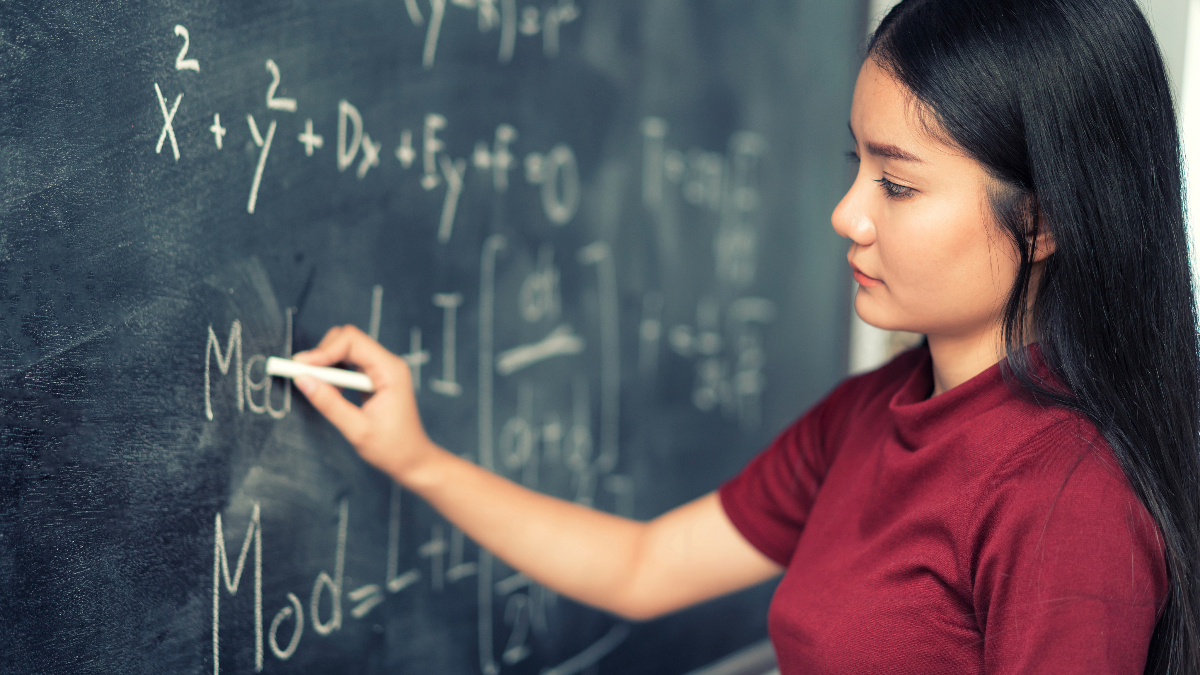Research Spotlight: Leigh McLean

How Does a Teacher’s Anxiety About Teaching Math, Science or Literacy Impact The Anxiety Levels of Their Students in Those Areas?
In a new study funded by the Institute of Education Sciences, University of Delaware Associate Research Professor Leigh McLean and her co-authors Jayley Janssen, Paul Espinoza, Sarah Lindstrom Johnson of Arizona State University and Manuela Jimenez of Glendale Community College found that teachers’ math and science anxiety were each positively associated with the respective math and science anxiety of their low socioeconomic status (SES) students. Published in the Journal of Educational Psychology, “Associations Between Teacher and Student Mathematics, Science, and Literacy Anxiety in Fourth Grade” describes the associations among teachers’ anxiety for teaching math, science and English language arts (ELA) and their students’ own anxiety in each content area. It also describes how these associations varied depending on student characteristics, like SES. The researchers found a positive relationship between teachers’ math and science anxiety and the math and science anxiety of their low-SES students. In other words, when a teacher was more anxious in these content areas, their low-SES students were also more anxious; and, when teachers were less anxious, so were their low-SES students. However, this relationship did not exist for higher-SES students. These results highlight the possible transmission of negative emotions between teachers and their students with low SES backgrounds in STEM content areas. The study thus fills a critical gap in the field: it shows that teachers’ emotions and their implications for students are content-area dependent in math and science and that those emotions may operate differently for different groups of students. (McLean and her co-authors did not find associations between teacher and student anxiety in ELA.)
The researchers offer several possible contributing factors for their overall finding. First, the researchers note that underserved children may rely more on their teachers as STEM socializers than other students, possibly because the home learning environments for lower-SES children are not as conducive to STEM learning. Second, teacher STEM anxiety may be heightened when teaching low-SES students: the majority of U.S. teachers report feeling unprepared to facilitate their young students’ STEM learning, as well as feeling unprepared to support the learning and development of students from underserved communities. Further, other research suggests that teachers at schools that serve higher populations of low-income students may not have access to hands-on and engaging STEM curriculum materials, particularly within the U.S., which could contribute to their anxiety.
In addition to their primary finding, McLean and her co-authors also discuss an interesting pattern of associations that emerged from their analysis. They found that teachers’ years of experience were strongly and negatively correlated with their math and ELA anxiety, indicating that teachers with more experience reported lower levels of anxiety in these content areas. However, there was no significant correlation between teachers’ years of experience and their science anxiety. McLean and her co-authors speculate that teachers who are the most uncomfortable with math and ELA may leave the field before reaching veteran status, or alternately, teachers with more experience may have had more time to build and adapt their skills in math and ELA. In particular, within the Southwestern state where this research was conducted, there are stronger curricular and professional development foci on math and ELA. As teachers progress in their careers, they might be more comfortable in these areas over time because they have access to more resources. However, these processes may not be as present in science.
“Elementary teachers are some of the first to formally socialize young students to different content areas. This study highlights the potential role of the teacher in supporting their low-SES students’ in developing emotions, attitudes, and beliefs about STEM content areas and eventual achievement and persistence in those areas,” McLean said. “These findings also really highlight the importance of considering teachers’ and students’ emotions along with other factors that we know are important to the learning process. We pay a lot of attention to things like building content knowledge and improving test performance, but these efforts may not reach their potential if not paired with efforts to address teacher and student STEM anxiety.”
“Perhaps most importantly, these findings tell us that emotions are directly tied to equity in STEM education. Teachers in underserved areas experience more challenging circumstances than do teachers in adequately-served areas, and these can definitely lead to more negative emotions. Further, this study shows us that these teacher emotions have the potential to translate to students. In order to most effectively address the gaps we see between underserved vs. adequately-served teachers and students, emotions need to be a part of the conversation,” added McLean.
To gather data for this study, McLean and her co-authors recruited teachers and students across six school districts in a single state in the Southwestern United States. Participants included 33 fourth-grade teachers and 463 students from 14 public schools. Overall, two cohorts participated (2018-19 and 2019-20), completing surveys on their anxiety levels in the fall and winter of their respective school years. These schools spanned a wide range of SES, with schoolwide Free and Reduced Price Meal enrollment ranging from 6% (high-SES) to 94% (low-SES). The racial and ethnic makeup of schools also varied greatly, with schoolwide percentages of students of color ranging from 96% to 17%.
McLean and her co-authors assessed teachers’ anxiety by adapting the anxiety subscale of the Teacher Emotions Scale to reflect each content area in this study. To assess student anxiety, the researchers similarly adapted the anxiety subscale of the Achievement Emotions Questionnaire for elementary students. The researchers then analyzed their data by running multiple regression models with cluster-robust standard errors.
About Leigh McLean
Leigh McLean is an associate research professor in CEHD’s School of Education and Center for Research in Education and Social Policy. She investigates how teachers’ emotions and emotion-related experiences including well-being impact their effectiveness and career retention. She is particularly interested in how teachers’ emotions impact their instructional practices and the role that early-career teachers’ emotions play as they transition into the career. She has expertise in quantitative, mixed-methods and longitudinal study design and implementation, multileveled data analysis and classroom observation.
STEM Education Faculty at CEHD
McLean’s research complement the work of the STEM education faculty in CEHD who study mathematics teaching and learning, which include Christina Barbieri (cognitive learning principles and math instruction), Lynsey Gibbons (teacher professional learning), Roberta Michnick Golinkoff(early STEM education), James Hiebert (models of continuous improvement in mathematics teaching), Charles Hohensee (backwards transfer), Amanda Jansen (student engagement and motivation), Nancy C. Jordan (number sense and fraction sense), Erica Litke (equitable algebra instruction), Anne Morris (models of continuous improvement in mathematics teaching), Jessica Namkung (special education with a focus on improving math outcomes), Teo Paoletti (student understanding and reasoning about math concepts) and Teomara Rutherford (student motivation in digital contexts).




